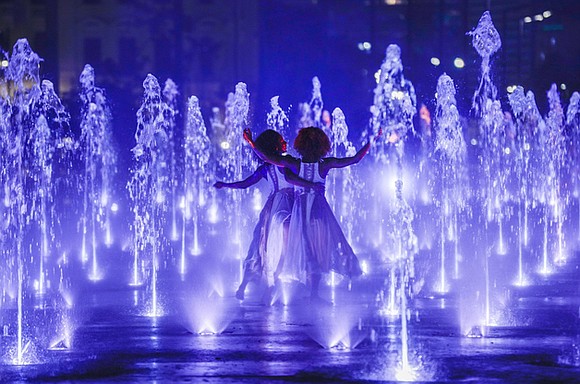Affirmative action hits Brazil’s runways
Free Press wire reports | 11/19/2020, 6 p.m.
SAO PAULO - Bold styles are usually the talk of the town for Sao Paulo Fashion Week. This year, couture connoisseurs in Brazil’s most cosmopolitan city have focused on the models— more specifically, the color of their skin.
For the first time, designers in Latin America’s largest fashion show, which wrapped up on Nov. 8, were obliged to ensure 50 percent of their models are either Black, Afro-descendant or Indigenous.
The Brazilian fashion world was jolted into doing some soul-searching this year when—after the killing of George Floyd by police in the United States sparked protests and discussion over racial injustice—three Black models shared personal stories of experiencing racism in the industry during a raw, hours long talk with Sao Paulo Fashion Week founder Paulo Borges.
Broadcast live via social media, that conversation was the first of many culminating in SPFW’s adoption of the new rule, Mr. Borges said in an interview with The Associated Press.
“Everyone understands there needs to be a bigger effort. We need to leave the space of white privilege to be able to make this change in the world,” he said. “The Eurocentric aesthetic of beauty cannot apply to the country of Brazil.”
Fashion-forward affirmative action is the latest effort to boost representation through edict in Brazil, where a previous, left-leaning government enacted race-based quotas in federal universities. Others have followed more recently, with one retail giant, Magazine Luiza, creating a Black-only trainee program in September and a Supreme Court ruling that required political parties to distribute campaign funds this month using new racial guidelines.
More than half of Brazilians identify as either Black or biracial, but you wouldn’t know it from the country’s magazines and ads, where images of light-skinned people remain dominant.
A century after Brazil became the Western Hemisphere’s last country to abolish slavery, in 1888, the phenomenon was exemplified by the popular TV show “Xou da Xuxa,” or “Xuxa’s Show,” hosted by the blonde, blue-eyed entertainer of the same name and backed by a bevy of young women with mostly matching features. Launched in the 1980s on the monolithic Globo network, it moved a generation of Black girls to straighten their hair, according to Marcelo Dias, national coordinator for entrepreneurism at Brazil’s Unified Black Movement.
“Do you know how that destroyed Black girls’ self-esteem, watching that? Not even one Black girl to see and identify with,” Mr. Dias said.
“The result was that our Black girls didn’t want to use their natural hair; they wanted to use the hot comb.”
Sao Paulo Fashion Week was born in 1995. In 2009, facing an investigation over discrimination, organizers signed an agreement with public prosecutors requiring 10 percent of models to be Black, Afro-descendant or Indigenous. Still, there were calls for stronger action. SPFW began recommending designers’ models be at least 20 percent Black, Afro-descendant, Asian or Indigenous.
Angela Brito, a Rio de Janeiro-based designer who moved to Brazil from Cape Verde more than two decades ago, showed The Associated Press her 2020 collection which she dubbed “Identity,” blending traditional woven cloth from her home country with other styles.
Even before SPFW’s race requirement, she employed all-Black casts and has sought to highlight the issue.
“The first question people always asked me has been, ‘Why is your whole cast Black?’” Ms. Brito said. “And I always asked, ‘Why is it that there were only whites before, and you never noticed?’ ”
Because of the coronavirus pandemic, the usual cloistered runway shows this year were jettisoned in favor of videos that were projected onto the sides of buildings and monuments, displayed on a truck circulating throughout the city and broadcast on social media.
One of the most popular videos has been an eight-minute clip by the Korshi 01 brand. It opened with a Black woman swiveling in a chair and then staring defiantly through square-shaped glasses, before cutting to a second Black model being made-up by a woman with flowing curls. The piece suggests that models who before were waiting in the wings are now taking center stage.







